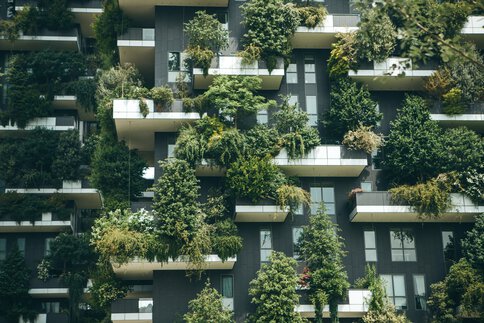BAU 2025—Topics and voices
BAU 2025, the world's leading trade fair for architecture, materials and systems, is just a few days away from opening its doors.
The challenges are great: the general economic downturn and loss of purchasing power, as well as rising construction costs and a shortage of skilled workers are keeping the industry busy. At the same time, our finite resources and the requirements for resilient, climate-friendly construction call for a rethink in all areas.
Every two years, the industry's market leaders meet at this cross-trade exhibition and act as drivers of innovation.
Time for selected exhibitor testimonials:
Climate-friendly construction
In the face of extreme weather events, prevention and adaptation to the consequences of climate change are a task for society as a whole. In order to meet future challenges, the adaptability of the built environment must be increased. But what does climate-adapted construction mean in concrete terms for buildings and neighborhoods?

In increasingly hot summers, these solutions effectively reduce the energy input into buildings. This means they heat up less and continue to offer a high level of living comfort in the future - almost without energy-intensive air conditioning units. We need to make the simple and effective leverage offered by external solar shading even more widely known.

Transformation of the city, the countryside and urban districts
How do we shape the future of our living spaces? Forward-looking planning for tomorrow is therefore important today. For the city and the neighborhood, for the countryside and the space in between.
The holistic view of building structures in a social context is a competence that architects, interior and landscape architects and urban planners rightly claim for themselves. Their work combines ecological, social, economic, functional and design aspects and supports the harmonization of individual interests with the common good. With this “KlimaKulturKompetenz”, the guiding principle of the Bavarian Chamber of Architects, our members assume their responsibility and promote the ecological transformation in planning and (re)building.
Cost-effective construction
The lever for cost-effective construction lies in the holistic view of all parts of the value chain—planning, construction and operation—which offers specific approaches and methods for cost efficiency and improved cost-effectiveness in each phase.

BAU 2025 is once again the central meeting place for the construction industry. The different perspectives and solutions for the demanding challenges of today and tomorrow are particularly exciting. The aim is to digitally drive economic and productive processes in construction, while at the same time strengthening sustainability and conserving valuable resources. BRZ focuses on AI assistance systems for core processes in construction operations, for example in construction costing or construction accounting.

Resource efficiency
More efficient use of resources is therefore essential to safeguard the quality of life of current and future generations. Is it all a question of materials and construction methods?
Using resources more efficiently and, above all, saving them must be a central concern of the construction industry. Companies have a great responsibility here, but they also have great opportunities for impact and a strong lever. It is important that companies and individuals alike take responsibility and commit to a sustainable future. Everyone has to play their part, otherwise it won't work.
In order to successfully implement the transformation of the construction industry more quickly, solutions are needed that best combine the two future topics of sustainability and digitalization. It is not enough just to design and manufacture products more sustainably and optimize processes on construction sites, but above all a change in thinking must take place. This requires the willingness of all those involved to embrace new solutions and sometimes to take the initially difficult path. Because it turns out: supposed additional effort is rewarded with added value in the long term.
We invite visitors to think beyond traditional access solutions when it comes to integrating technology for seamless movement, and to think innovatively about how we can create a future worth living together. Whether seamless integration or eco-friendly technology, our featured products and solutions are designed to improve safety, comfort and environmental sustainability.
At BAU 2025, climate-friendly construction and resource efficiency are clearly the top priorities for ERLUS. Our extended product and after-sales guarantee concept shows that at ERLUS, sustainability is lived together with processors and customers.
In line with the key themes of the trade fair, we at Gira are focusing on sustainable materials and pioneering technologies. Our switches and socket outlets made of recycled or natural building materials such as linoleum multiplex are just one example of our commitment to environmentally friendly and resource-saving construction.
Modular, serial, productive
Will serial, modular construction save the construction industry? Are sustainability and modular construction a perfect match?
And will digital tools be the only way to increase productivity?

Our aim is to plan buildings over their entire life cycle, including the reuse of our own product developments. This approach not only enables efficiency, but also sustainability and resource conservation. It becomes even more efficient when we plan and build in digital, parameterized models. It is crucial that we drive these topics forward together in order to make the construction industry fit for the future.
We call contemporary construction “building on demand”: where previously plumbers and drywallers assembled installation walls and shafts from countless individual parts on site, today the custom-made assembly comes to the construction site completely prefabricated at the right time.
